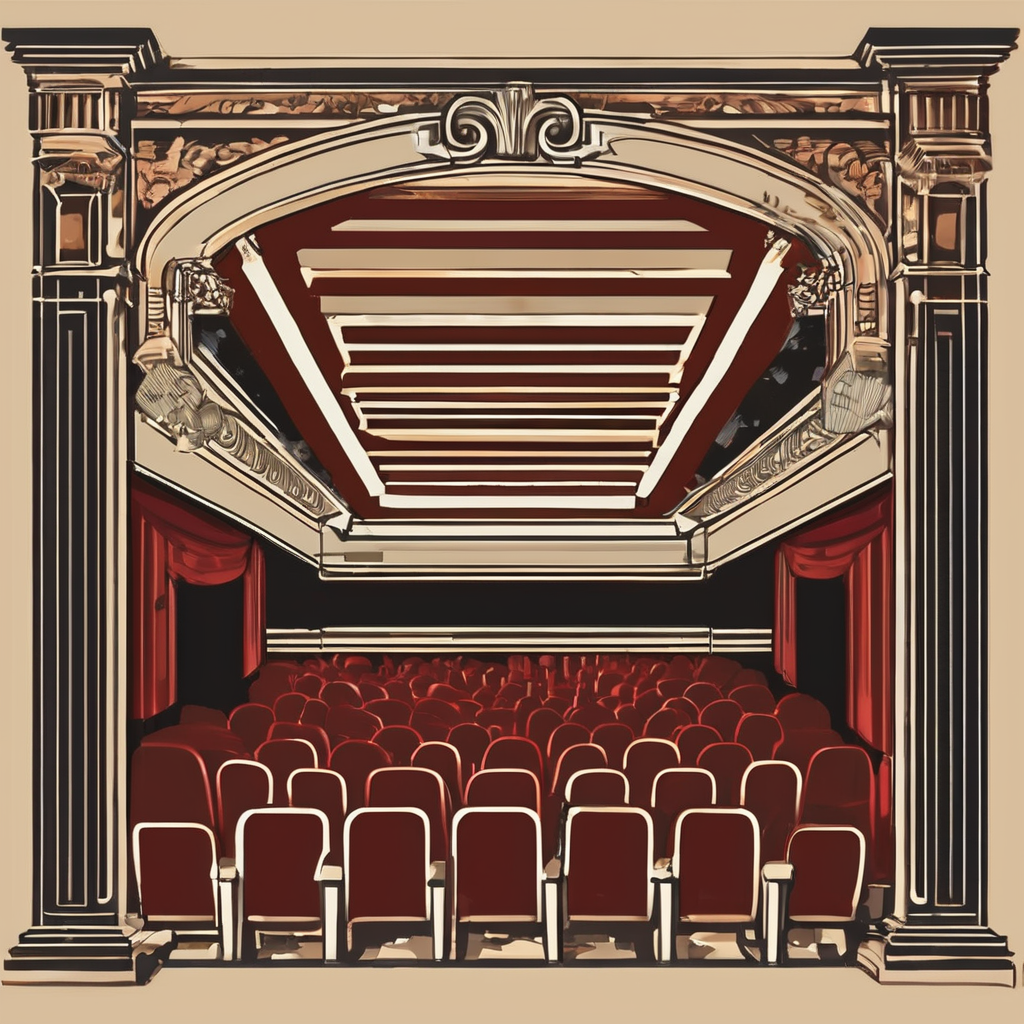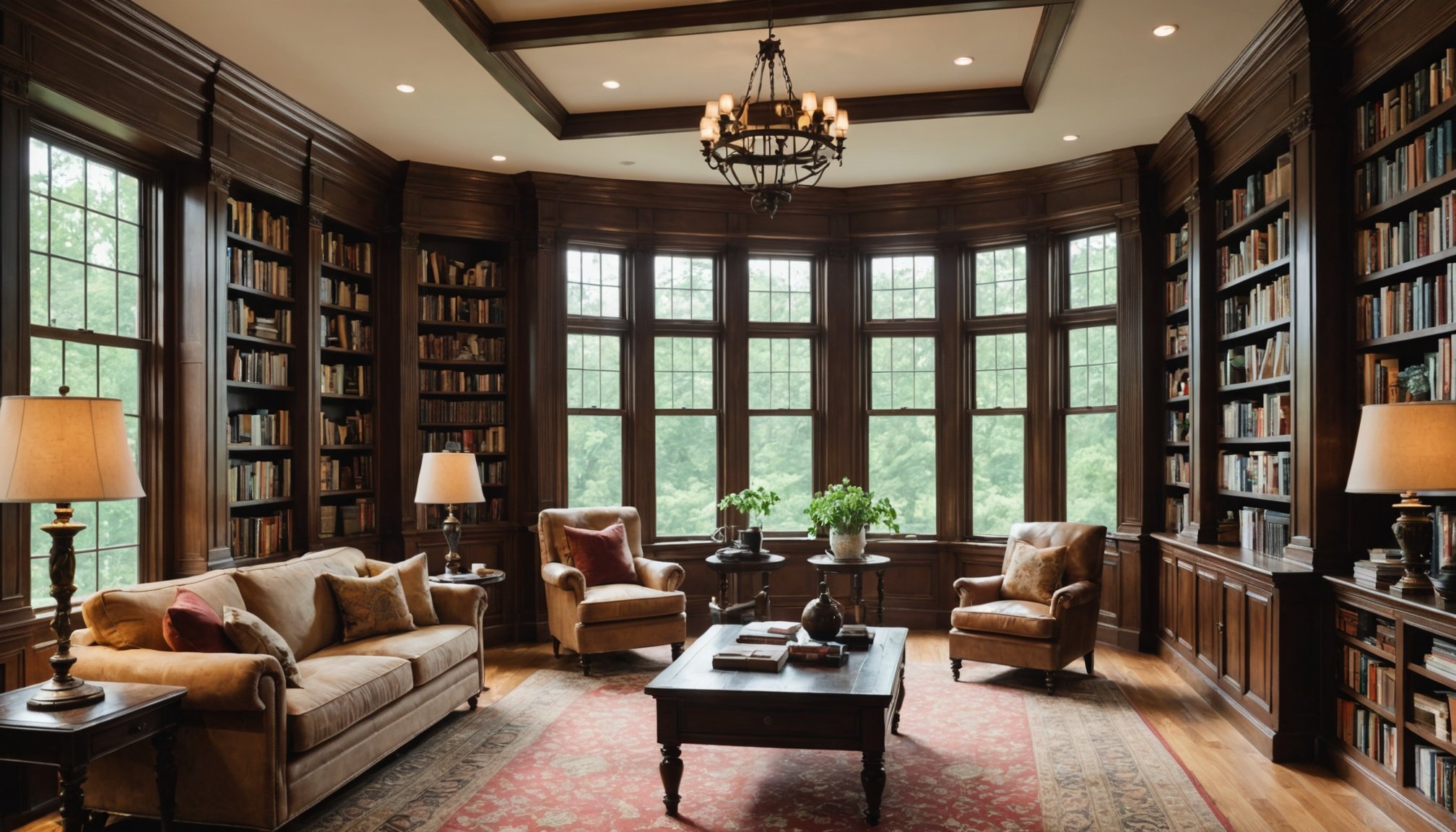Importance of Natural Light in Home Library Design
Incorporating natural light into home library design offers substantial benefits, particularly in enhancing creativity and concentration. Exposure to natural light stimulates the brain, fostering an environment where ideas can flourish and attention is sustained. This crucial element impacts not just productivity but our psychological well-being, casting a positive influence on mood and emotional stability.
Natural light significantly reduces the risk of eye strain and fatigue, common ailments in reading-intensive environments. The presence of daylight provides consistent illumination, minimizing the need for harsh artificial light that can overburden the eyes. This is vital in creating a comfortable, user-friendly library space.
In parallel : Unlock budget-friendly techniques for installing underfloor heating in concrete surfaces
The psychological effects of natural light extend beyond immediate physical benefits. By promoting an uplifting and calming atmosphere, natural light contributes to overall mental health, reducing symptoms of anxiety and depression. Designing a library while strategically harnessing natural light involves considering room orientations and window placements to maximize exposure. Doing so ensures a space conducive to both mental wellness and productivity.
For these reasons, integrating natural light into home library design is essential, serving as a catalyst for both creative and personal growth. By focusing on this element, one can achieve a harmonious balance between functionality and psychological benefits.
Additional reading : Designing an ideal noise-free environment for online teaching: mastering home distractions
Layout Considerations for Maximizing Light
Designing a library layout that optimizes natural light involves strategic room design and effective space utilization. Understanding the best room orientations is crucial for maximizing light exposure. For example, south-facing rooms tend to receive more consistent natural light throughout the day. This orientation allows for a brighter, more welcoming environment that can enhance productivity and mood.
Best Room Orientations
Selecting the ideal room placement is a foundation of effective light exposure. By orienting library spaces to capture the maximum amount of daylight, natural illumination is consistently enhanced.
Open vs. Closed Layouts
An open layout is significant in promoting light flow, avoiding obstructions that might block natural light. When considering library layout, positioning bookcases and large furniture pieces away from windows ensures that light can permeate the entire space.
Utilizing Architectural Features
Incorporating architectural features such as glass walls or large windows can further augment the amount of natural light within the room. The placement of mirrors can strategically reflect light to create a brighter environment. These considerations ensure that every design aspect contributes to a well-lit space, emphasizing the benefits of natural light in home library design.
Lighting Options for an Ideal Home Library
Exploring the plethora of lighting options available is essential for designing a home library that effectively utilizes both natural and artificial light. Different types of windows play distinct roles in regulating natural light, each contributing uniquely to the ambience and functionality of the library. For instance, floor-to-ceiling windows allow for the maximum penetration of daylight, while clerestory windows can accentuate a room’s architectural elements while maintaining privacy.
Opting to include skylights can further enhance illumination in areas that might otherwise remain dim. Skylights provide direct access to natural light from above, enriching spaces with an even, consistent glow throughout the day. This can be particularly effective in rooms with high or vaulted ceilings where vertical light entry is unimpeded.
Balancing natural and artificial light sources requires careful planning. While natural light serves as the primary source during daylight hours, artificial lighting should be considered for evening use. Incorporating dimmable lights gives flexibility to tailor illumination levels to various activities, such as reading or relaxation. Embracing a combination of pendant lights and strategically placed lamps can also offer versatile lighting that complements the natural daylight.
Color Schemes to Enhance Light and Aesthetics
An effective color scheme can drastically influence a home library’s design, emphasizing both light and aesthetics. Lighter shades have superior light-enhancing properties, reflecting natural illumination within the room. For instance, whites, pale blues, and soft grays bounce daylight around, creating an airy and expansive feel. When selecting light-reflective paint colors, prioritise these to maximise the library’s brightness.
Best Colors for Reflecting Light
Certain hues are particularly efficient at reflecting light, aiding in a well-lit ambiance. Opt for soft neutrals or pastels which reflect light without overwhelming the space. These colours ensure your library stays bright and inviting.
Accent Colors that Complement Natural Light
While the base should focus on lighter tones, introducing accent colors can add depth and character. Choose shades that harmonize with natural light, like muted greens or warm terracottas, to complement the overall palette.
Color Psychology in Library Spaces
Color choices extend beyond aesthetics; they significantly affect mood and creativity. Blue tones foster calmness, aiding focus and concentration, while warm hues like yellow can stimulate creativity. Thoughtful interior design choices enhance both function and emotion in your library.
Furniture and Decor Choices
Selecting the right furniture and decor plays a crucial role in optimizing a home library that is both functional and aesthetically pleasing. An essential consideration is ergonomic design, which ensures that furniture is comfortable and supportive during prolonged use. Chairs with adjustable heights and lumbar support can help maintain proper posture, preventing discomfort and fatigue.
Furniture selection should consider materials that reflect or complement natural light. For example, choosing furniture with light-colored finishes can enhance the overall brightness of the room. Glass or polished surfaces can further the reflection of light, contributing to a lively and inviting atmosphere.
Home library decor can emphasize natural light by incorporating mirrors and reflective surfaces. These elements not only serve a functional role but also add a layer of sophistication to the space. Decorative accents, like light-colored curtains or strategically placed plants, can draw attention to areas enriched with natural light, creating focal points that enhance the library’s vibe.
Producing a balanced environment hinges on thoughtful choices in furniture and decor, ensuring your library remains a place of comfort and productivity while highlighting the benefits of natural illumination.
DIY Suggestions for Creating a Bright Space
Creating a bright home library does not always require extensive renovations or costly additions. With a few DIY projects, you can optimize natural light and improve the overall atmosphere efficiently and affordably.
Simple DIY Enhancements
Consider adding light-reflective surfaces, such as mirrors, to bounce natural light around the room. Strategically placing these in dim corners or opposite windows can brighten your library significantly.
Repurposing Existing Items for Light Optimization
Utilize existing furniture creatively by rearranging pieces to avoid blocking windows. Items like translucent bookshelves can double as dividers without obstructing light flow. Incorporate glass cabinet doors to maintain an open, airy feel that allows light to pass through seamlessly.
Cost-effective Ways to Increase Light Entry
Adjust window treatments using sheer curtains or blinds that diffuse light effectively. These can be easily swapped out for budget-friendly options while allowing more daylight to enter your space. Also, repainting window frames in lighter hues can further reflect light inward.
By embracing these creative solutions and home improvement tactics, you can enhance the atmosphere of your library without needing substantial investment, making your space inviting and conducive to reading and relaxation.
Expert Advice on Design Success
Harnessing the power of natural light can transform your home library design into a hub of creativity and tranquillity. Experts in the field stress the importance of aligning the right architectural and design strategies to maximize light exposure.
To achieve optimal results, consider insights from industry professionals. One expert tip is to tailor lighting solutions by understanding your library’s geographic location—northern light tends to be cooler and more consistent, perfect for reading spaces. Enlist tools like 3D modeling software to visualize how light interacts with your space before making significant decisions, thus avoiding costly errors.
When pondering interior design, avoid common pitfalls like excessive reliance on dark, bulky furniture, which can impede light flow. Instead, industry professionals recommend lightweight materials and open shelving solutions to maintain a bright ambiance. These choices not only facilitate better space utilization but also enhance the overall mood.
Finally, strategic use of artificial lighting complements natural sources, especially in places with limited daylight hours. Balancing both can create the perfect ambiance for relaxation and learning, offering a well-rounded and inspirational space for avid readers and thinkers alike.











